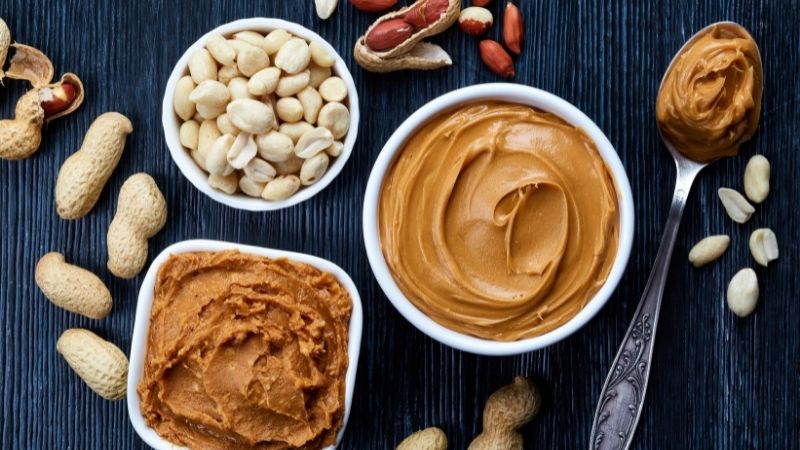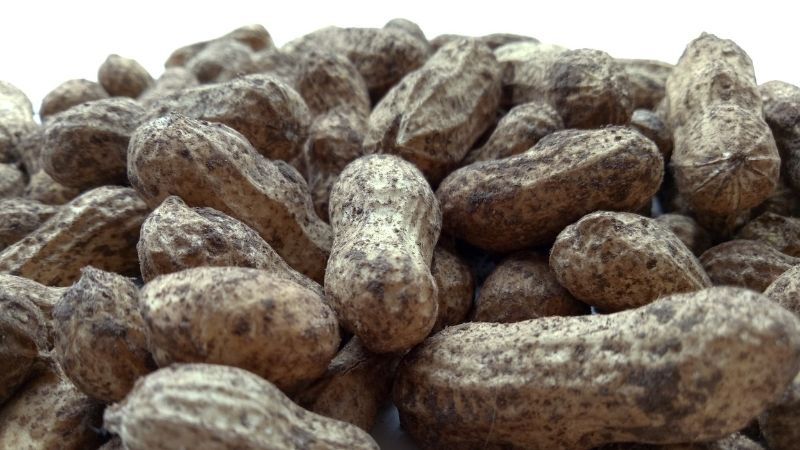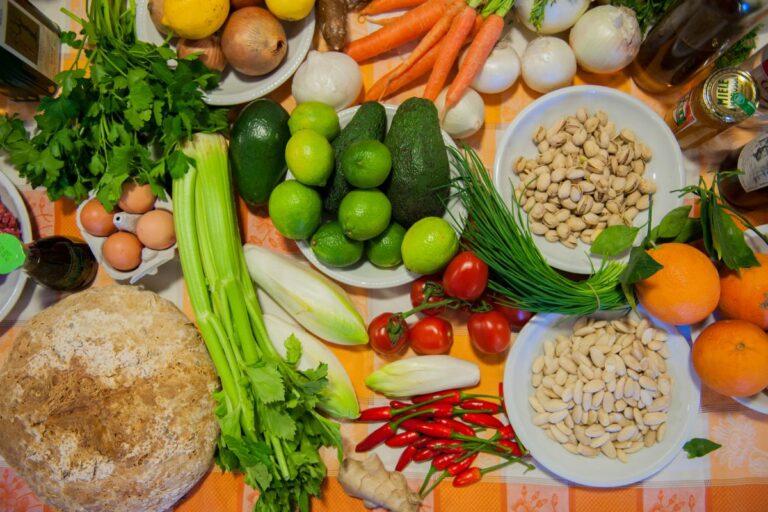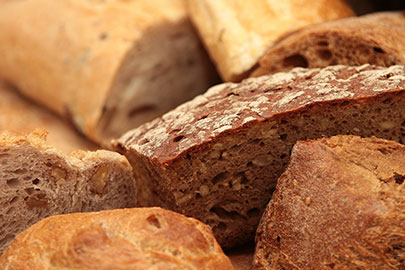Difference Between Peanut and Groundnut
Peanuts and groundnuts are absolutely not the same thing, even if the boundaries aren’t always clear for us. Most people are using the “peanut” word all the time, but do you know exactly the difference with a groundnut?
Peanuts are a subset of the groundnut’s family, the most popular, that is used for peanut butter and other uses. Groundnut is a general term that include plants having edible tuberous roots.
You have the short answer, but I’ll give you all the details in the following, starting with the peanut, then the groundnut and finally comparing them point per point. Keep reading if you want to know everything about this!
A Peanut
Definition
A low-branching widely cultivated annual herb (Arachis hypogaea) of the legume family with showy yellow flowers having a peduncle which elongates and bends into the soil where the ovary ripens into a pod containing one to three oily edible seeds.
Merriam Webster
Origins
The exact origins of peanuts are unknown. Though, the earliest recorded history starts in South America. People were making sculptures in the shape of a peanut.
Since the delicious plants were first discovered, they would spread around the world. They were introduced to North America in the 1700s. They started to be grown as a commercial crop in America by the end of the 1800s.
Today, these plants are one of the beloved nuts in the world. This is due to their rise in the culinary world, namely through the discovery of peanut butter.
Taste
When thinking about a peanut, the first thing that comes into most people’s minds is its distinctive taste. Though it is a legume, peanuts still have a nutty flavor.
It should be noted, though, the way that it will taste often depends on the way that it will be processed.
For example, when they are unprocessed, they can be nutty, taking on an earthy quality. However, when they are roasted, they will take on sweeter tones. This can be accentuated by pairing it with foods like chocolate.
Uses
Because of the way that the flavor of the peanut changes depending on the way that it is processed, it is one of the most versatile ingredients in the kitchen. It can be used in both savory and sweet dishes.

One of the most popular examples of the ways that peanuts can be used as part of the cuisine is peanut butter.
This is a sandwich spread, which has earned a prominent place in popular culture. Namely, it’s one-half of the hugely popular Peanut Butter Jelly sandwich.
While most people are most familiar with using cooking with peanuts, there are some more creative ways that you will be able to use this ingredient. These uses include:
- Adding it to animal feed
- Using the pigment as a dye for clothing
- The fiber can be turned into paper
- Smooth peanut butter might be able to help you shine surfaces
Nutritional Information
The nutritional information will depend on the way that you are using it. In this case, we’ll look at the information on a quarter of a cup of raw peanuts. In this case, the nutritional information breaks down as follows:
- 207 calories
- 9 grams of protein
- 18 grams of fat
- 6 grams of carbohydrates
- 3 grams of fiber
- 1 gram of sugar
Health Benefits and Risks
There are plenty of health benefits that come from incorporating peanuts into your diet. In this case, you will be able to improve your heart health. They might be able to help you reduce your cholesterol levels. This, in turn, will be able to lower your chances of having a heart attack. It also lowers your risk of a stroke.
Though they don’t contain a lot of calories, peanuts will be able to make sure that you stay feeling full. Because of this, they can form a key part of some diets. They are used to suppress the appetite, making it easier to stick to a meal plan and lose weight.
Thirdly, there is some evidence that people who regularly eat any type of nut are likely to live longer. The reasons for this remain elusive.
The biggest health risk, though, is allergies. It’s estimated that around one percent of adults have a peanut allergy. However, the dangers for those with these allergies can be very high. For example, contact might cause rashes. If eaten, it can cause breathing problems.
Even casual contact might be enough to trigger some of these symptoms. To prevent serious consequences, many people with allergies will carry an EpiPen.
A Groundnut
Definition
Any of several plants having edible tuberous roots.
Merriam Webster
Origins
Groundnuts refer to a larger family of nuts. Though this includes the peanut, they aren’t the only groundnut.
For example, it can be used to refer to the Apios Americana. This is a plant that is capable of producing edible beans. The type of plant will determine the way that the seed, or nut, is shaped.
It’s believed that they originated in Western Africa. When their flavors were discovered, they quickly spread around the world.
Taste
There are many types of groundnuts, each with a distinctive taste.

Uses
Many groundnuts are used as part of the cooking process.
For example, they might be turned into cooking oil. At other times, their high nutritional content will make them a good choice for the basis of a health supplement.
Nutritional Information
Again, the nutritional information of groundnuts will vary, depending on the type of species that you are using.
Generally, though, they will be high in protein. They also tend to be high in calories and protein, which makes them a good choice for those looking for a way of reducing appetite while on a diet.
Health Benefits and Risks
There are plenty of health benefits that can come from regularly consuming groundnuts.
They will be able to help you increase your lifespan. Additionally, they are a good source of protein. This can be useful for bodybuilders, making it easier for them to increase their muscle mass naturally.
Like peanuts, the biggest health risk is that someone will be allergic to them.
Differences Between Peanut and Groundnut
Many people use the terms peanut and groundnut interchangeably. But there are a few subtle differences between them.
The Shape of the Nut
The peanuts will have a distinctive shape. They are cylindrical, with a depression in the middle of the nut. The size of the nut might vary, depending on the conditions in which it was grown. On the other hand, the shape of the groundnuts will vary slightly, depending on the type of species it comes from.
Popularity
Peanut is one of the most popular groundnuts available. It is widely used in cuisines and has formed a crucial part of popular culture. To put the popularity of this nut into perspective, it’s estimated that the average will eat around six pounds of peanuts every year. Most of this will take the form of peanut butter.
While there are some other groundnuts, that are available, they don’t share the same status as the peanut. Because of this, many of them aren’t as widely used as the peanut. Because of this, they aren’t as common to cultivate.
Taste
The peanut has an iconic, nutty, flavor. This has allowed them to be used in a wide range of cuisines. However, the taste of the groundnut will often depend on the type of species that is being fostered. For example, some will offer a more subdued flavor. This can sometimes be akin to the taste of a chickpea.
Variety
Peanuts are just one subset of groundnuts. The family they come from is highly diverse. They are both parts of the Fabaceae family. This group has over 20,000 species. This includes trees, herbs, and shrubs.
The type of nut produced will depend on the type of Fabaceae plant that is grown. It will also depend on the conditions in which it is grown. For example, getting the ideal mix of water and soil nutrients will produce a bigger nut.
Comparison Table
Hopefully, you have a better idea of some of the biggest differences between peanuts and groundnuts. Here is a quick rundown of some of the most important distinctions.
| Peanut | Groundnut | |
| Shape | Cylindrical, with a depression in the middle. | Depends on the type of groundnut. |
| Nutritional benefits | High | High |
| Origins | South America | Western Africa |
| Most popular use | Peanut butter | Cooking oil, health supplements |






